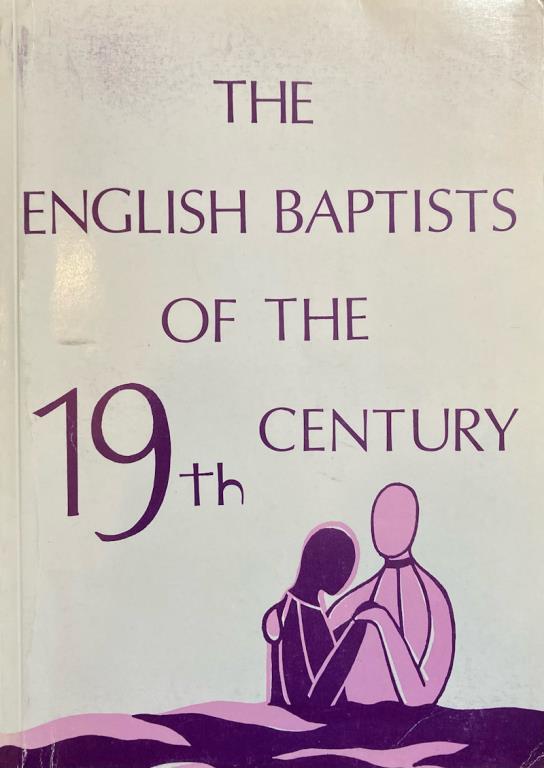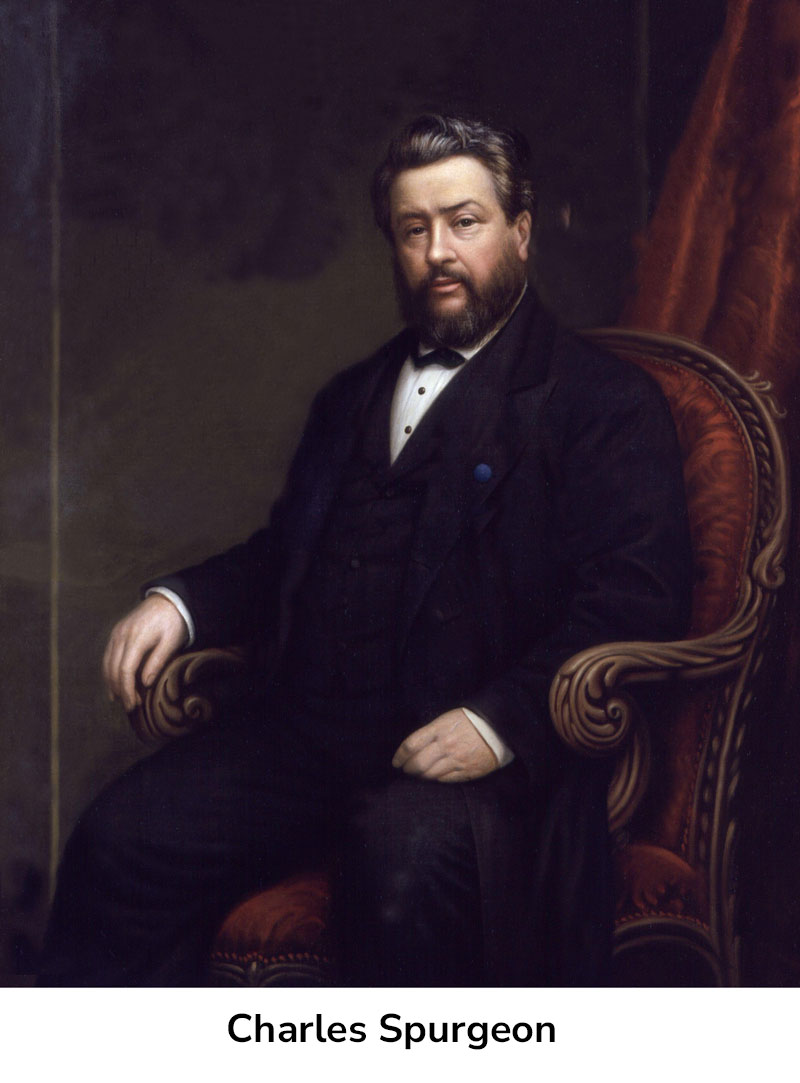19th Century
English Baptists in the Nineteenth Century
 The English Baptists of the nineteenth century were the heirs of the Evangelical Revival of the previous century. The impetus of the revival was sustained by Bible and tract societies, evangelistic agencies and organisations of travelling preachers. Old churches mushroomed in size and new churches were planted, especially in growing industrial areas. More women than men were recruited, the normal ratio of church members being two women to each man. Although women were excluded from ordained ministry and were hardly ever permitted to become deacons, they played a full part in church life, especially in money-raising and Sunday schools.
The English Baptists of the nineteenth century were the heirs of the Evangelical Revival of the previous century. The impetus of the revival was sustained by Bible and tract societies, evangelistic agencies and organisations of travelling preachers. Old churches mushroomed in size and new churches were planted, especially in growing industrial areas. More women than men were recruited, the normal ratio of church members being two women to each man. Although women were excluded from ordained ministry and were hardly ever permitted to become deacons, they played a full part in church life, especially in money-raising and Sunday schools.
The intellectual legacy of the eighteenth century helped church growth. The values of the Enlightenment – dropping obscurities and concentrating on practical essentials – reinforced the preaching of a simple gospel. The greatest exemplar of the fusion of Evangelical and Enlightenment influences was Robert Hall, probably the most powerful preacher in England in the early years of the century. Hall challenged the traditional Baptist insistence that believer’s baptism should be a condition of admission to the Lord’s supper. His position, open communion, gradually came to prevail in the mainstream of the denomination. Hall’s contemporary Andrew Fuller, also swayed by Enlightenment thinking, modified earlier Calvinist views about predestination by urging that the Almighty did not consign unbelievers to perdition. Human beings had an obligation to repent and believe the gospel so that if they failed to respond they were responsible for their own eternal ruin. This moderate Calvinism was the accepted theological position taught in the colleges belonging to the Particular Baptists for most of the century. See Baptist Quarterly articles related to Fuller and evangelical Calvinism here.
The implication of Fuller’s doctrinal conviction was that the gospel must be preached everywhere so that all could have the opportunity to believe. That was the theological mainspring of the (BMS), which sponsored the work of William Carey at Serampore in India and sent missionaries to other parts of the world including the West Indies, China and Congo. Support for the BMS contributed to binding Baptists together, leading to the creation in 1813 of a fledgling Baptist Union and in 1832 to a more effective Union which gradually gathered increasing support as a national organisation. Some of the more traditionally minded Baptists, however, were disinclined to adopt new ways. In 1829 the Suffolk and Norfolk Association separated from existing local bodies, inaugurating the tradition of the Strict and Particular Baptists. They were strict because they did not embrace open communion; and they were particular because they did not accept Fuller’s modification of older views on predestination. Refusing to affiliate with the Baptist Union, their common bonds were periodicals – the Gospel Standard, the Earthen Vessel and the Gospel Herald. At the same time the New Connexion of General Baptists, strongly Evangelical but Arminian in its theology and so believing that all might be saved, retained separate denominational structures down to 1891, when it merged with the Baptist Union. The Old Connexion of General Baptists, however, was a shrinking body that had absorbed few Evangelical influences and most of its congregations moved towards the Unitarians during the century.
Baptists as a whole believed in religious liberty. At the opening of the century they were still harassed by the authorities in church and state which struggled to retain a monopoly of religion for the Church of England. Baptists were therefore prominent in the Liberation Society, created in 1844 to campaign for the end of the established status of the Church of England. The society was increasingly dedicated to removing the remaining grievances of Nonconformists including the obligation to pay rates for the upkeep of parish churches, an imposition which was not abolished until 1868. Baptists normally saw the Liberal Party as their natural political home because it favoured such reforms. Through the party they agitated for popular education free from Anglican control and, towards the end of the century, for measures to promote temperance. Prominent among the other reforms which they supported was the ending of slavery. Some of the enslaved Baptists in Jamaica, who had risen in revolt against their status in 1831 were cruelly suppressed and so the BMS missionary William Knibb campaigned at the general election of the following year for the return of MPs who would vote for the abolition of slavery in the British empire, which was carried in 1834. There were also Baptists who defended the empire, with Major-General Sir Henry Havelock, for instance, playing a key role during the Indian Mutiny. The general stance of the Baptists in the last third of the century, however, was to support W. E. Gladstone, the Liberal leader, in opposing any extension of British imperial territory. See Baptist Quarterly articles related to Baptists and Empire here.
 From the 1860s onwards there was a spread of aesthetic and intellectual fashions associated with Romanticism. A taste for the mediaeval led to Baptists erecting churches in the Gothic style [add link here to examples] and a preference for less sharply defined doctrine began to challenge received Evangelical certainties. The resistance to such theological change was led by C. H. Spurgeon, generally regarded as the greatest preacher of the second half of the century in any part of the world. Spurgeon was a Calvinist, but he did not campaign against his fellow Baptists who were Arminians. His target was the vague conceptions, especially surrounding the atonement, that were emerging in his day. In 1887-88 he took the leading part in the Downgrade Controversy (see Baptist Quarterly articles related to the Downgrade Controversy here), denouncing the current downgrading of basic doctrines and withdrawing from the Baptist Union. Not many, even of the pastors trained in Spurgeon’s college, followed him, and the preacher’s encouragement of separation was counteracted in the following decade by a powerful movement for close co-operation between the various Nonconformist denominations. Methodists, Congregationalists, Baptists and others came together in Free Church Councils for common efforts in evangelism, social reform and the defence of religious liberty. As the nineteenth century closed, Baptists possessed a larger church membership than ever before and entertained high hopes for the future permeation of England by Christian values.
From the 1860s onwards there was a spread of aesthetic and intellectual fashions associated with Romanticism. A taste for the mediaeval led to Baptists erecting churches in the Gothic style [add link here to examples] and a preference for less sharply defined doctrine began to challenge received Evangelical certainties. The resistance to such theological change was led by C. H. Spurgeon, generally regarded as the greatest preacher of the second half of the century in any part of the world. Spurgeon was a Calvinist, but he did not campaign against his fellow Baptists who were Arminians. His target was the vague conceptions, especially surrounding the atonement, that were emerging in his day. In 1887-88 he took the leading part in the Downgrade Controversy (see Baptist Quarterly articles related to the Downgrade Controversy here), denouncing the current downgrading of basic doctrines and withdrawing from the Baptist Union. Not many, even of the pastors trained in Spurgeon’s college, followed him, and the preacher’s encouragement of separation was counteracted in the following decade by a powerful movement for close co-operation between the various Nonconformist denominations. Methodists, Congregationalists, Baptists and others came together in Free Church Councils for common efforts in evangelism, social reform and the defence of religious liberty. As the nineteenth century closed, Baptists possessed a larger church membership than ever before and entertained high hopes for the future permeation of England by Christian values.
David Bebbington
Related Articles